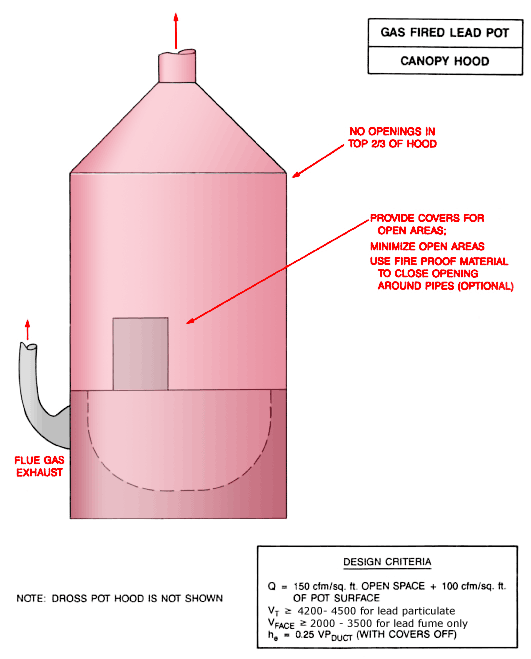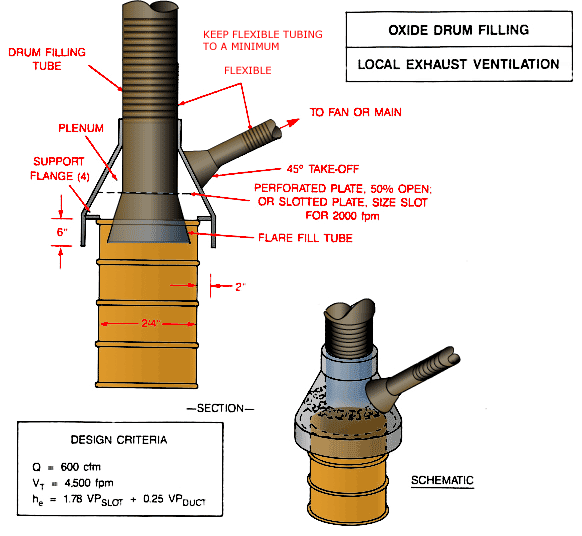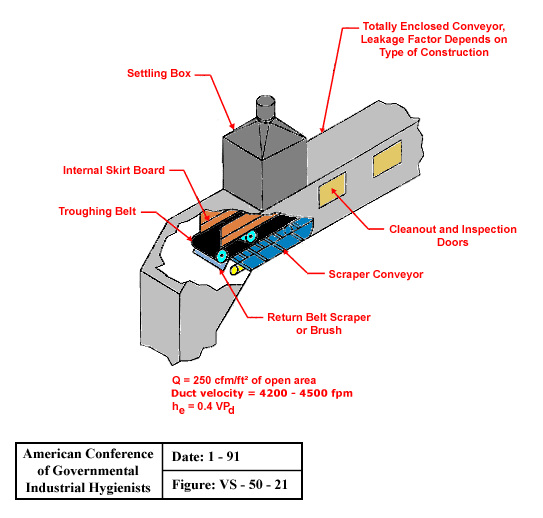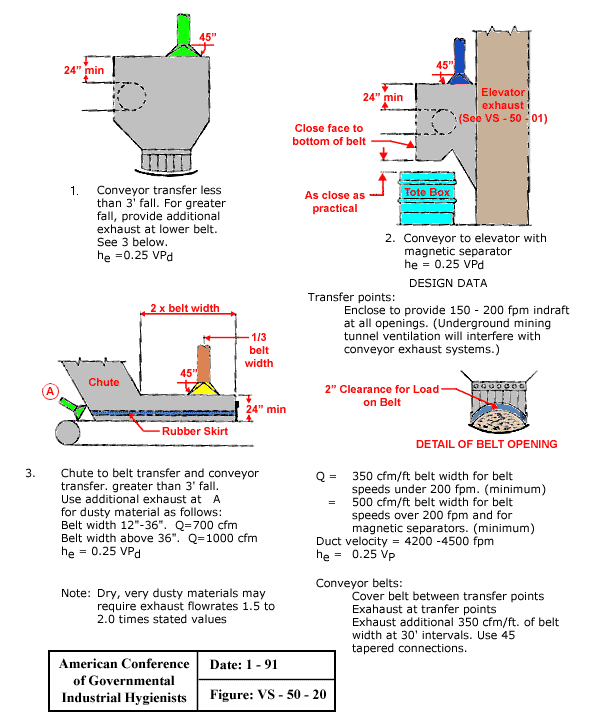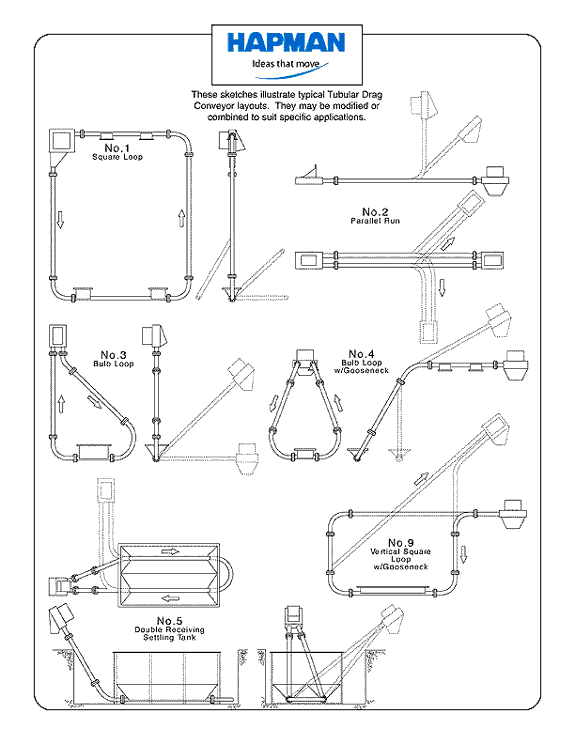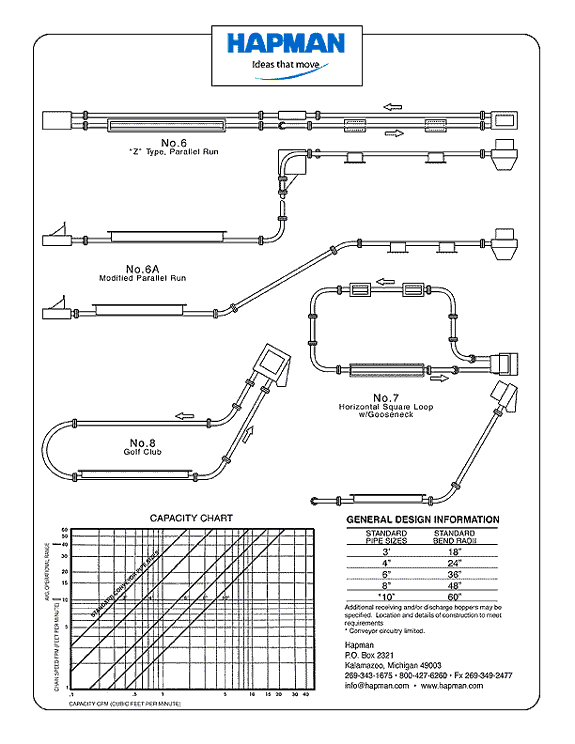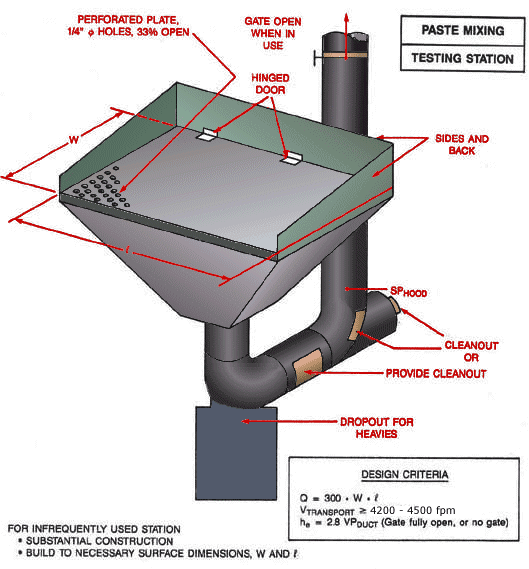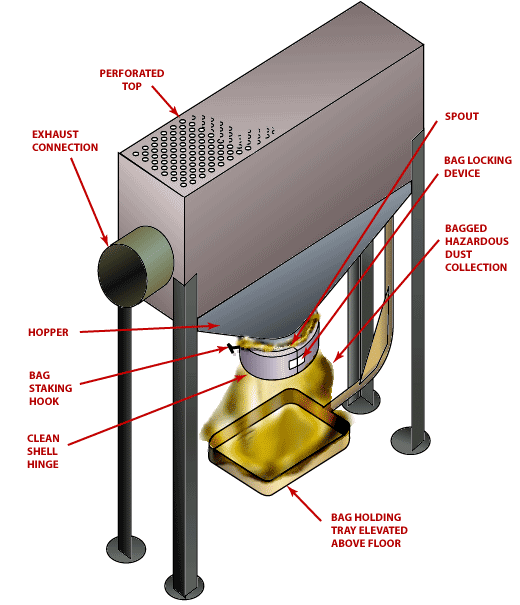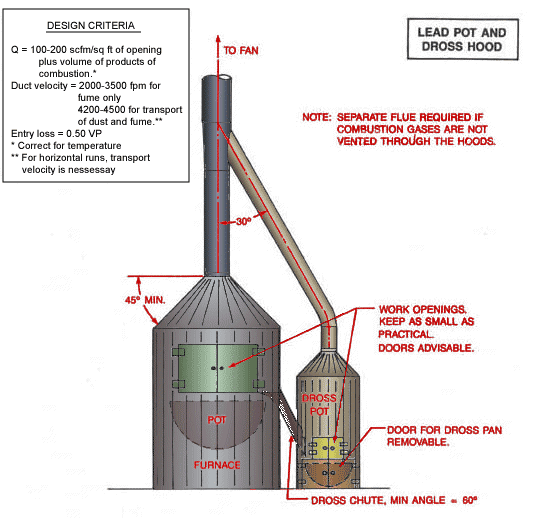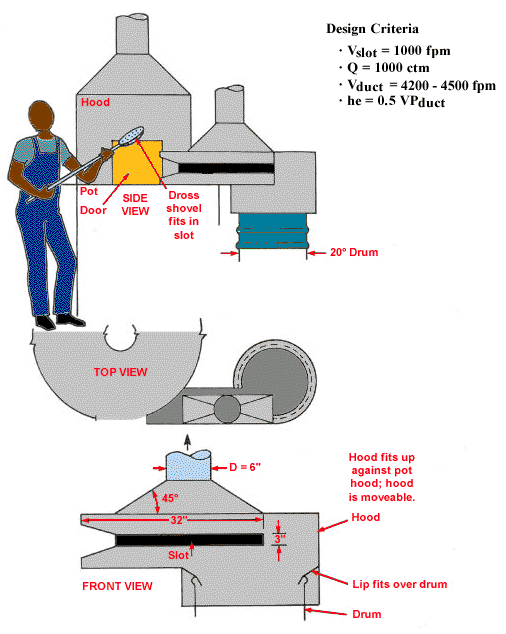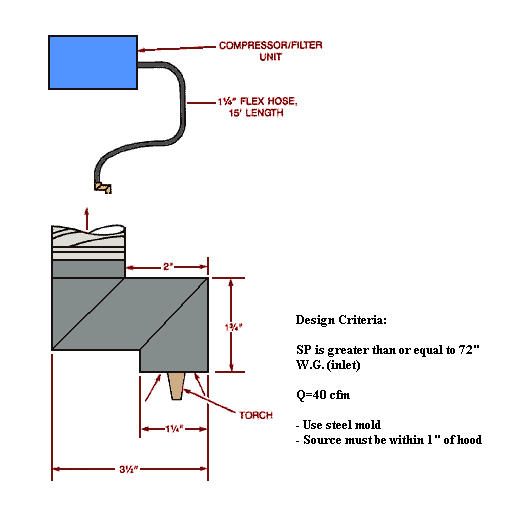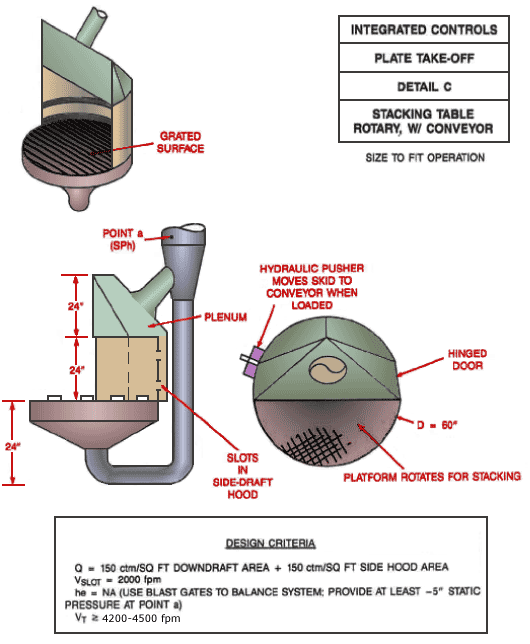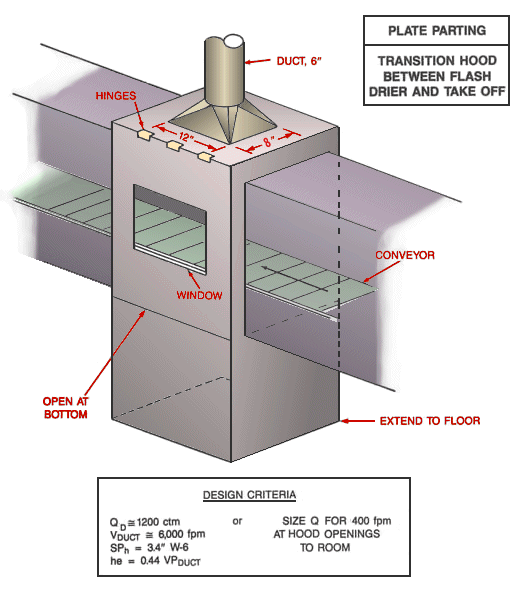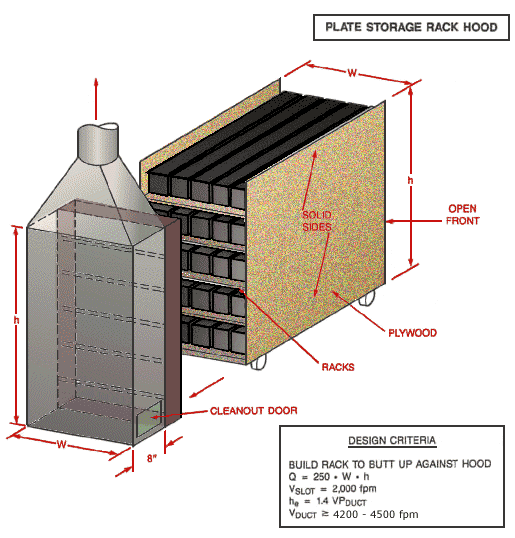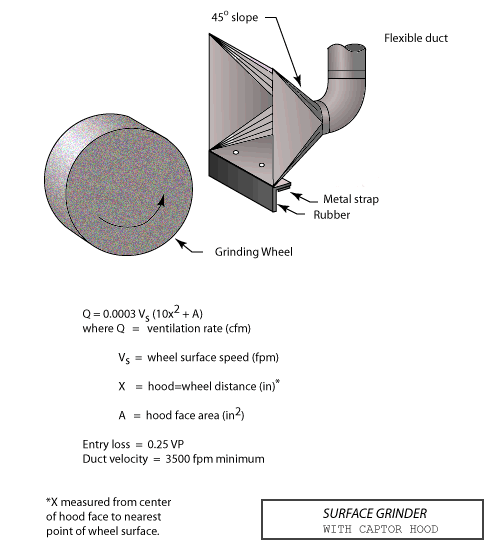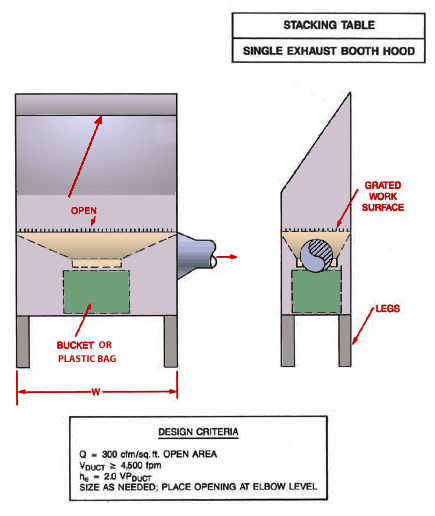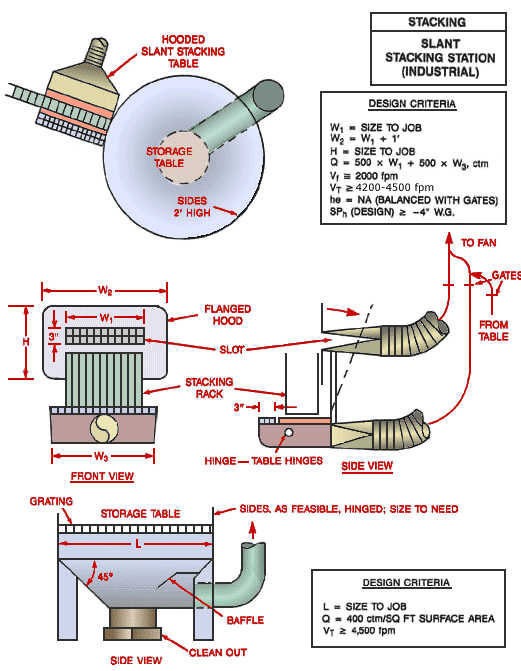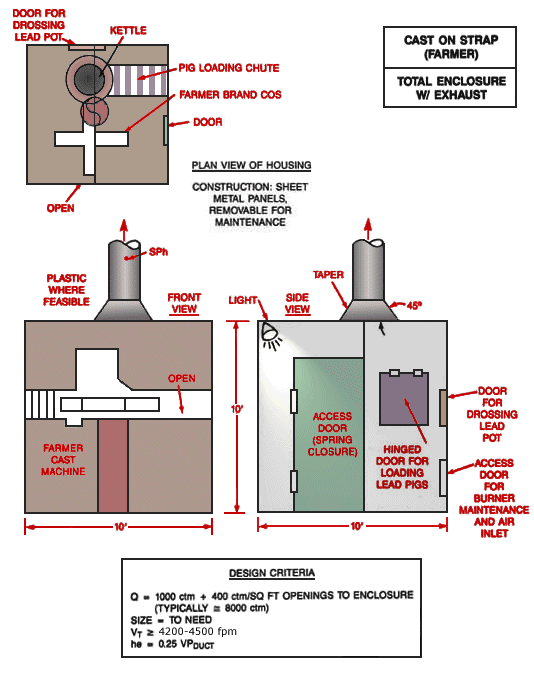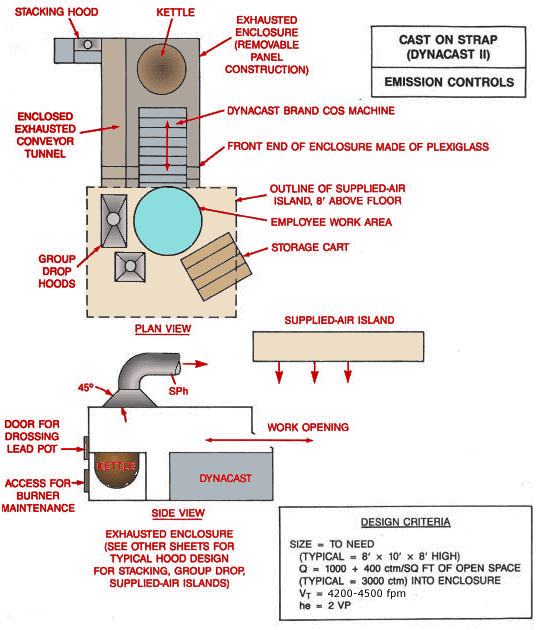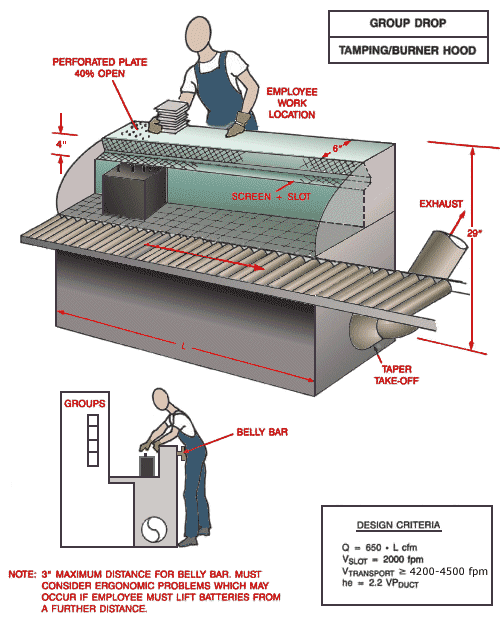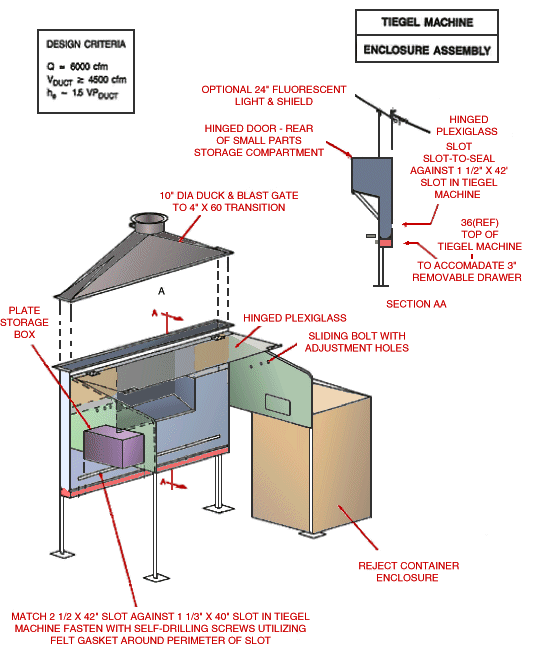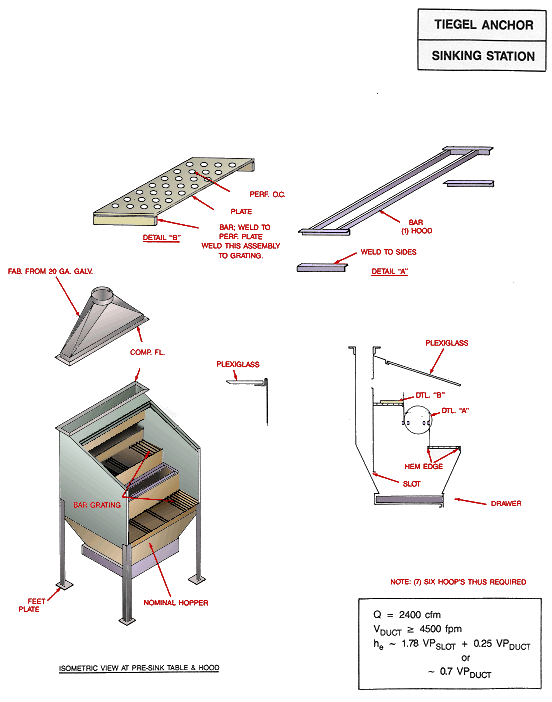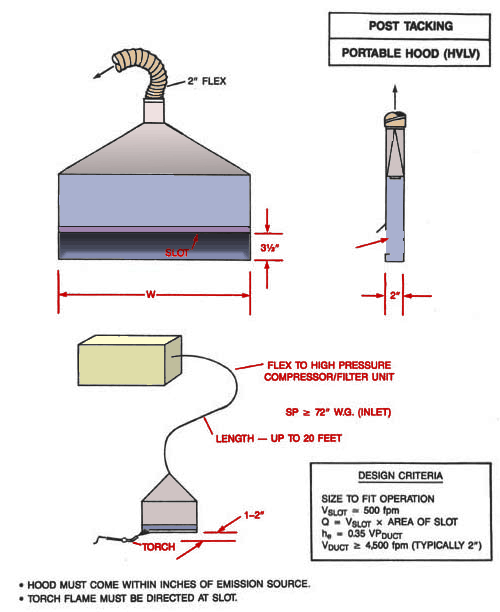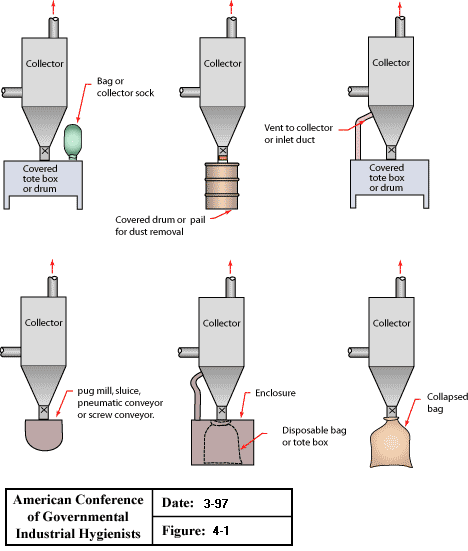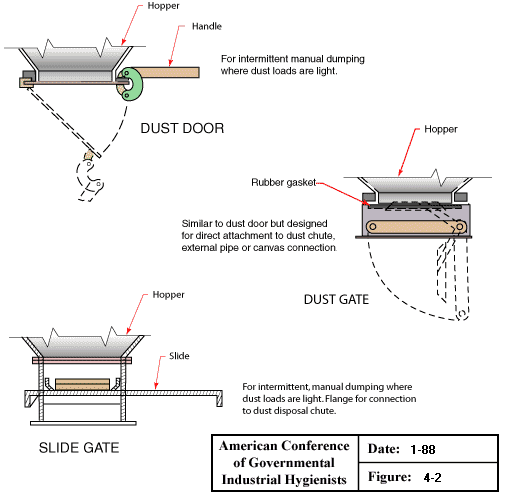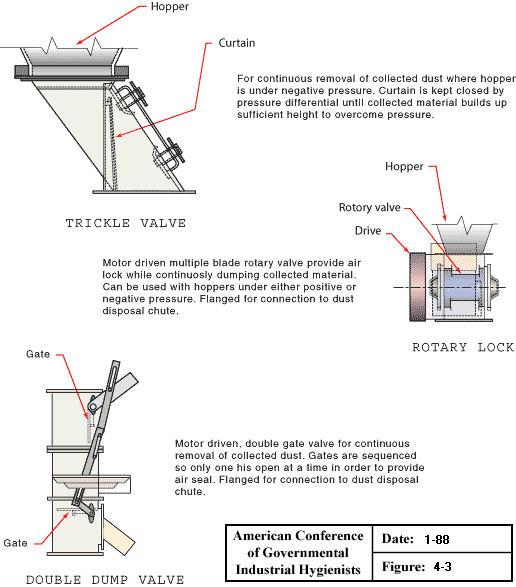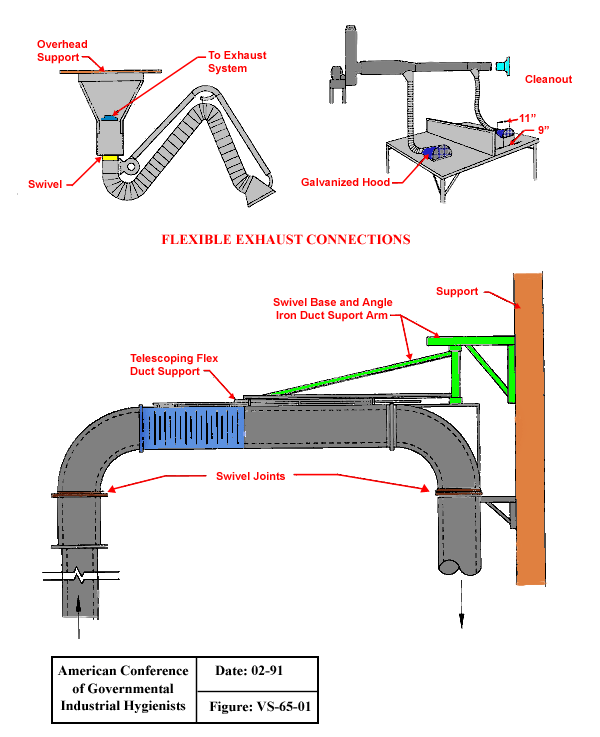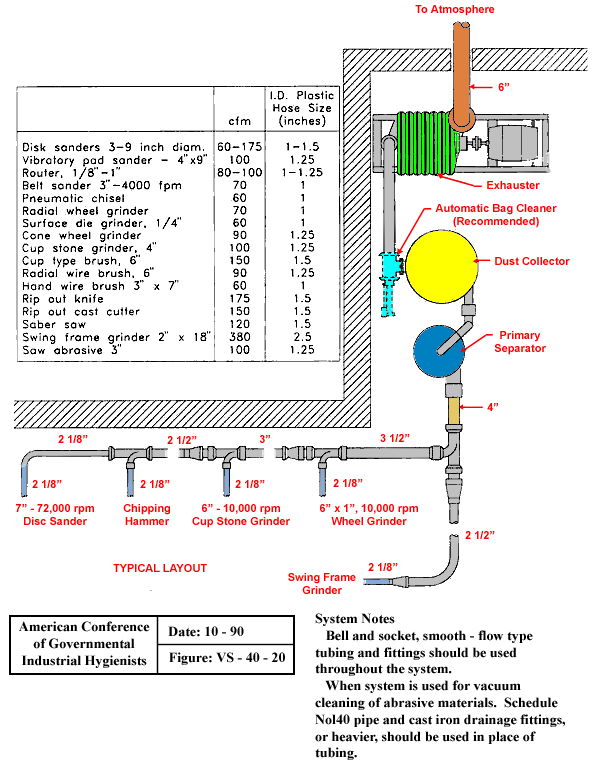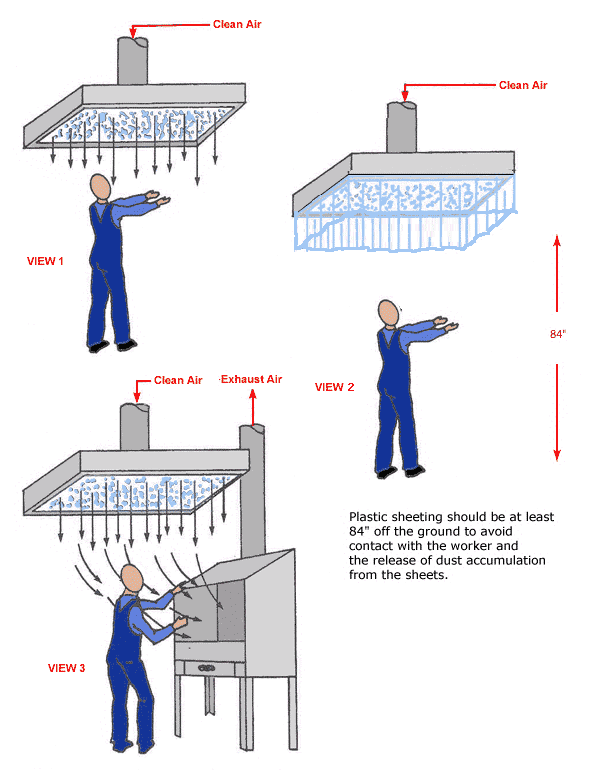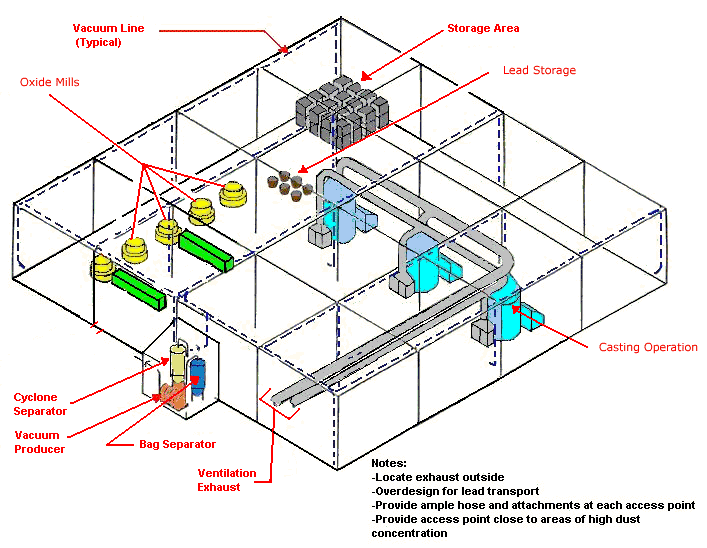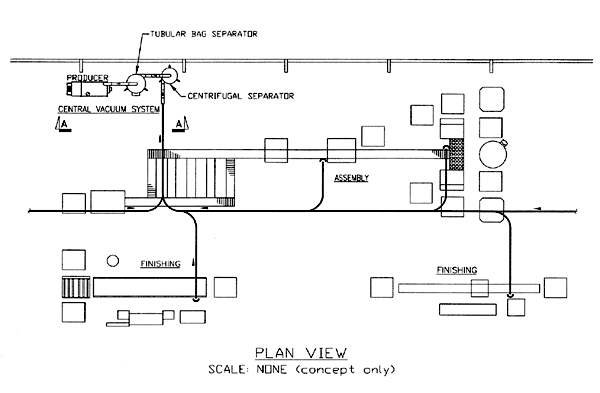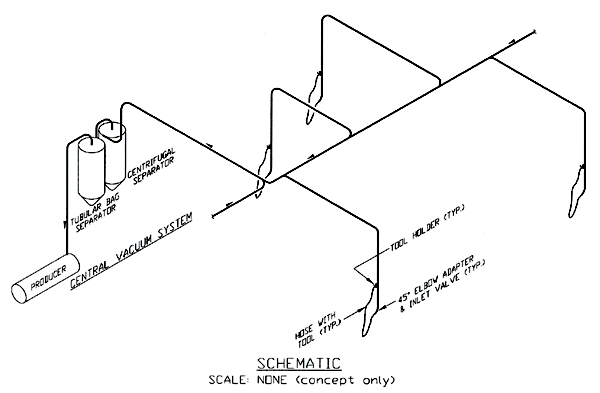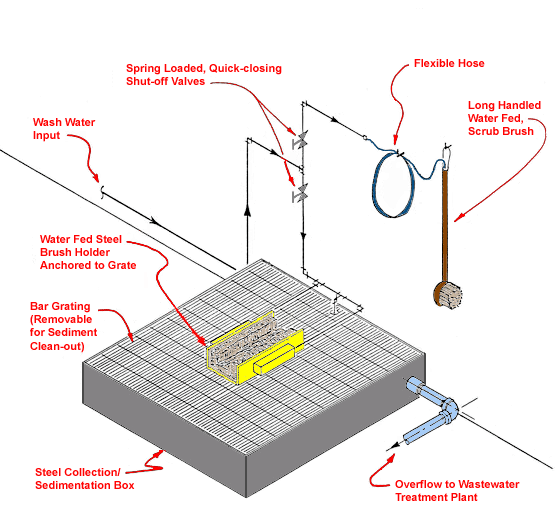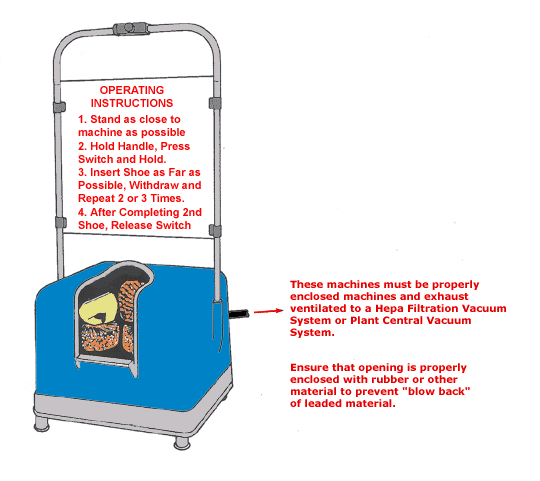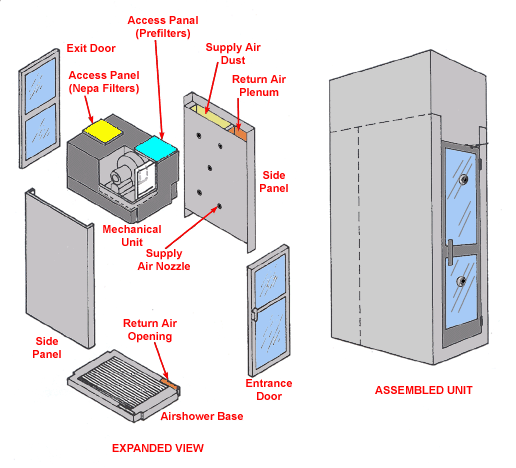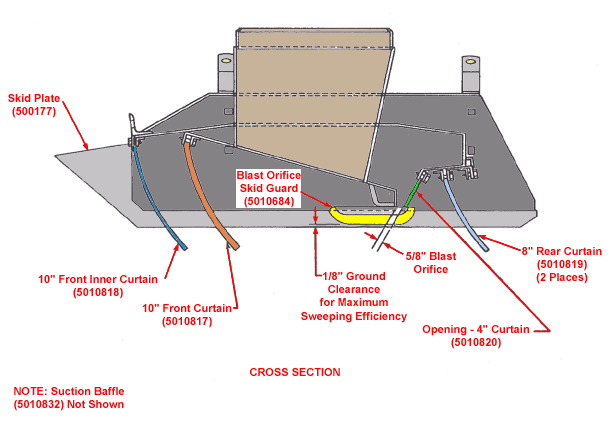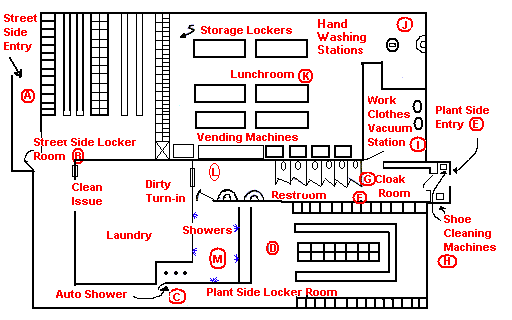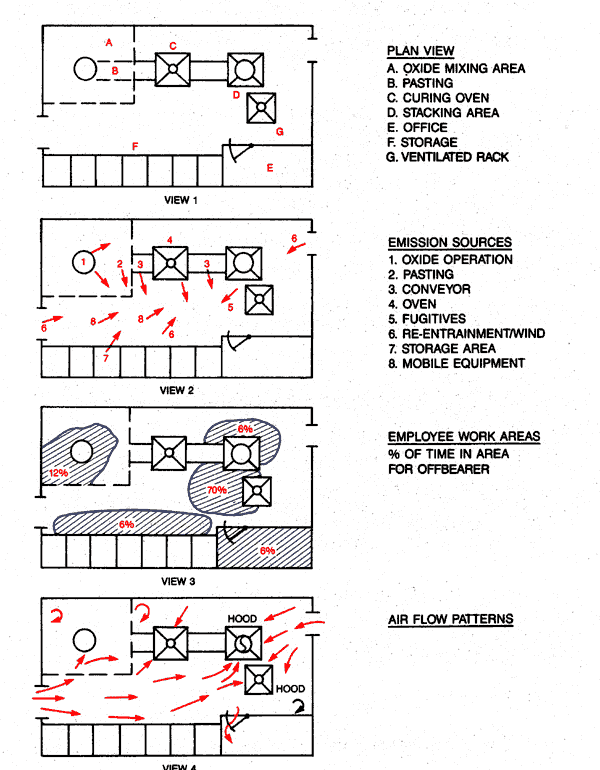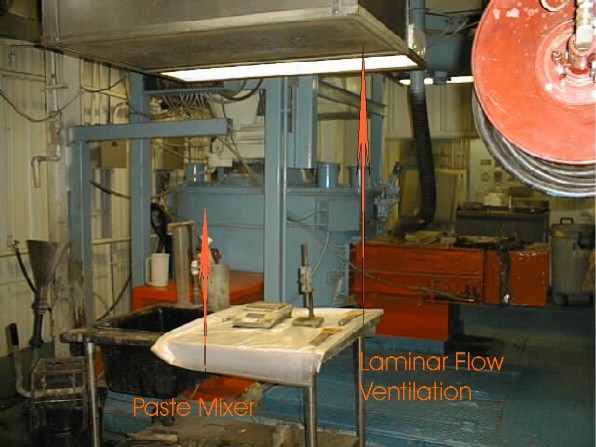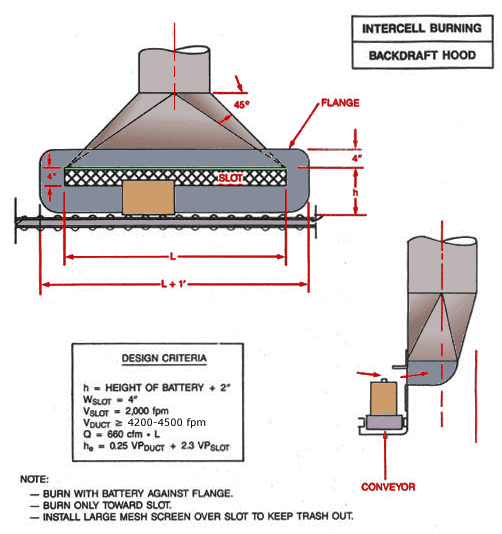Lead: Battery Manufacturing eTool
Oxide and Grid Processing » Paste Mixing

View larger image of paste mixer
During the paste mixing process, lead oxide, water, acid, and other chemicals are blended in a mixer to form a thick paste. The major source of lead exposure in this process is from lead oxide that escapes from the paste mixing machine, dries, and becomes airborne.

Potential Sources of Exposure
- Major sources of exposure are leaking equipment such as:
-
oxide conveyance,
-
weigh hoppers,
-
or mixer door seals.
-
-
Ventilation may be inadequate due to moist material plugging the system, which may allow lead dust to become airborne, or allow rising air currents to carry suspended lead to the employee's breathing zone.
-
Sampling and testing oxide or paste may increase the employee's exposure to lead.
-
Lead-containing expander may become airborne when added to the paste mixer.
-
Manually scraping and cleaning the mixer during cleanup or while changing pastes may cause lead particles to become airborne.
-
Lead exposure may increase when there is re-entrainment of dried and settled lead on buckets, the cone feeder, or other equipment.
-
Lead dust can become airborne when workers fold lead-containing expander bags for disposal outside of a ventilated enclosure.
-
Lead oxide can become airborne when dried oxide flakes off of gloves and hand tools.
-
When a cone feeder is empty, heat rising from the pasting machine causes a chimney affect. This may dry out the oxide and suspend it in the rising air currents.
-
Lead dust and particles may become airborne due to drafts and air currents caused by moving equipment or motor drives.
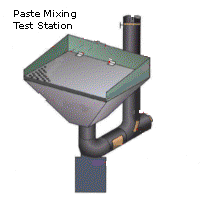
Possible Engineering Controls
- Use local exhaust ventilation.
- Perform testing and sampling at ventilated workstation.
-
Provide exhaust ventilation at sampling port on mixer, and at expander handling areas.
-
Design clean-out hatches on exhaust system to facilitate cleaning.
-
Ensure ventilation is working properly and has adequate transport velocity. Recommended transport velocity for lead particulate is 4,200 - 4,500 fpm.
-
Keep weigh hopper, delivery system, and mixer continually under negative pressure (Figure 1).
-
Enclose the mixing platform tightly and keep under negative pressure.
-
Maintain systems so they are leak-free.
-
Install laminar flow (supplied air) islands at operator work station.
-
Eliminate manually handling paste by arranging mixer equipment so the cone discharge is directly over the paste machine feed hopper.
Possible Work Practice Controls
-
Keep the cone feeder from becoming empty.
-
Watch for oxide leaks and immediately report them to supervisors.
-
Close all openings and doors to mixers.
-
Empty lead-containing expander slowly into mixer while it is under negative pressure, then carefully discard the empty bags in a closed container.
-
Do not shake or crush empty expander bags.
-
Do not hammer the mixers, cone feeders, hoppers, ductwork or any other paste or oxide vessel with tools to loosen oxide or paste.
-
Use plastic or some other material, which will not become heavily contaminated with oxide, to cover tubs of paste.
-
Provide adequate PPE, a change of clothes, and shower rooms (see OSHA Lead Requirements for PPE, Housekeeping, and Hygiene Facilities).
- Maintenance:
-
Report to supervisors all mechanical problems such as defective seals at oxide transfer points, mixer doors, holes in the mixer or broken seals on the oxide screw conveyer.
-
Repair defective equipment promptly (see Preventive maintenance program).
-
- Housekeeping:
-
Wipe down exterior of mixer with a light coat of oil.
-
Use a central vacuum drop to remove any oxide spills or leaks at the oxide delivery area and at the mixing operator station.
-
Use high-pressure water spray instead of a putty knife during mixer cleanout.
-
Use a putty knife with a long handle if high-pressure water spray is not available.
-
Place tools such as putty knives or spatulas in a pail of water after use.
-
Keep tubs used for transporting paste clean.
-
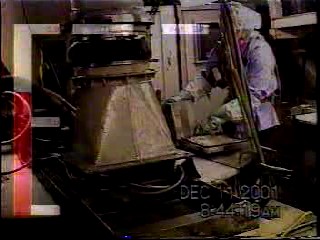
With video exposure monitoring (VEM), worker exposures to lead are monitored and recorded with a direct reading instrument. At the same time, workplace activities are recorded on a videotape. The left hand bar indicates changes in total dust concentrations over time.
As the employee loads material to the paste mixer, the red bar indicates increasing employee exposure occurs while dumping containers into the mixer.
Note: This example illustrates how VEM can be used for determining sources of employee exposure. Other sources can be determined by using VEM sampling for a full work shift.


